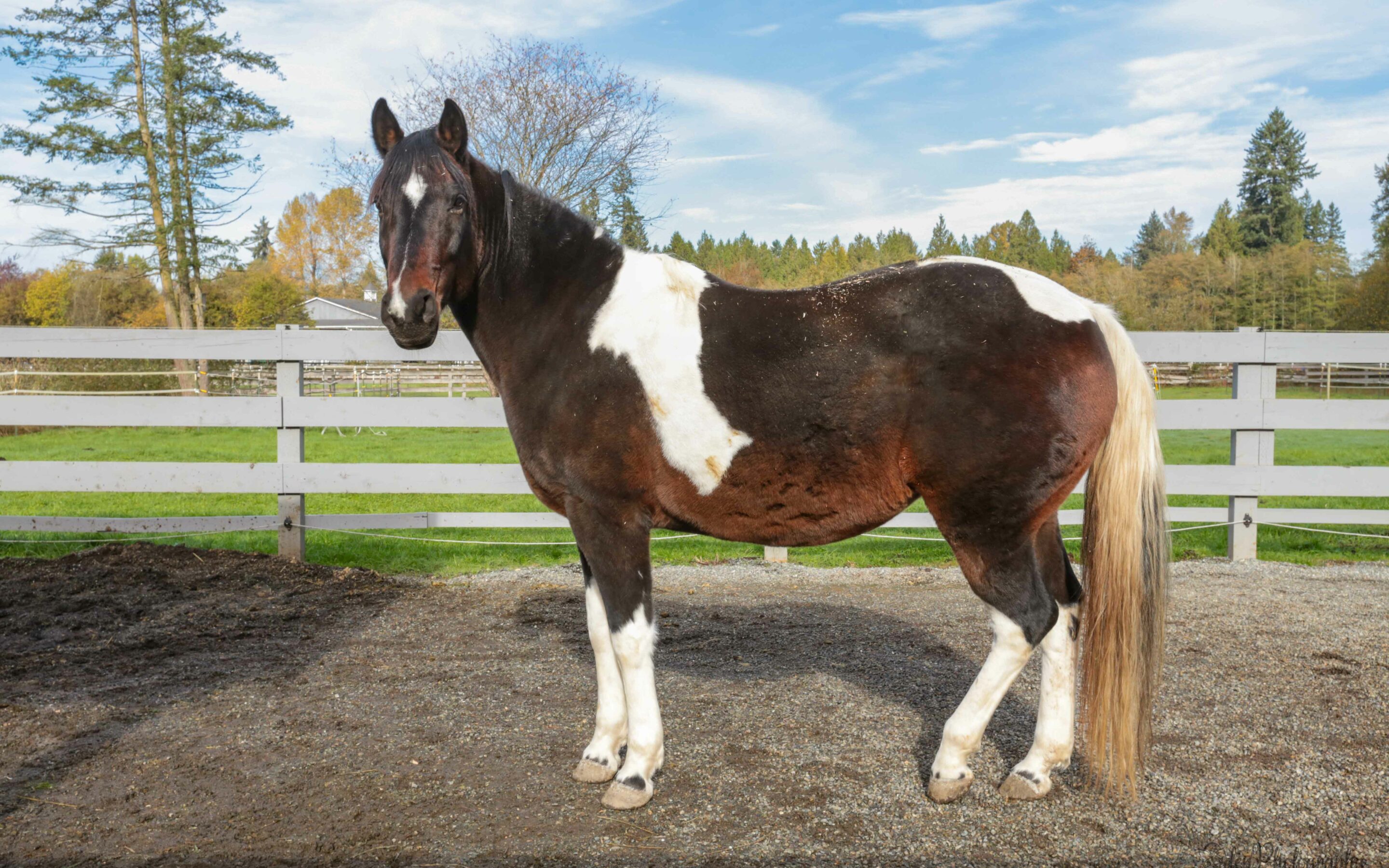In getting to know Violet, we found two things to be true: she was in desperate need of a diet, and she was dull. Luckily, neither fact was without remedy. Over the last month, we have helped Violet shed a few lbs, and have already begun to see the true shape of the horse under all that extra adipose. Her body condition score might also be contributing to fact number two — it can’t feel particularly fun to move out when you are carrying around a few hundred pounds you don’t need. But ultimately, Violet is sluggish to respond to really any ask. We speak a lot about horses being ‘soft’ and having ‘life,’ which means they are quick and light to respond to the cues we give them. Not only is Violet in need of several reminders before taking us up on our original offer, but she often wears her ears back. This stink face also correlates directly to life, mostly just a lack thereof. Perhaps she was nagged at one point in her past, which in turn led to an unwillingness to move out. A horse who is never given a release for the correct behavior in turn learns not to expect one — why do anything when there is no benefit?
For a horse like Violet, the most important thing to teach her is that she will be given releases for doing what is asked of her. This is really the first step of the building blocks of training, for without life, you can accomplish very little.
We knew that Violet had been previously started under saddle in her life, but that it had been a number of years since that had happened. However, after our initial assessments, it didn’t seem as though Violet was particularly troubled. Aside from the aforementioned dullness, she wasn’t particularly bothered by very much, and she passed through our saddling checklist quickly and without issue. One of the main things would be helping her lose weight so the saddle would fit her better!
As Lexee N who is currently working Violet puts it, “she thinks she knows the answer to what is being asked, and is very confident in her (wrong) answer.” We use a metaphor here, black and white stones. Horses come to SAFE with a number of black (and white) stones within them. A horse pulls a stone to determine how they will react to something, be it a stimulus or a question being asked. Depending on the horse and their past, they may come with a great number of black stones, or very few. We try to instill in our horses as many white stones as possible with the hope that one day when they reach into themselves they will pull from that pile of white stones more often than the black. Violet has a lot of good try, and seems to be a fast learner, so we are hopeful that the day will arrive sooner than later when she answers what is being asked with the correct answer.


